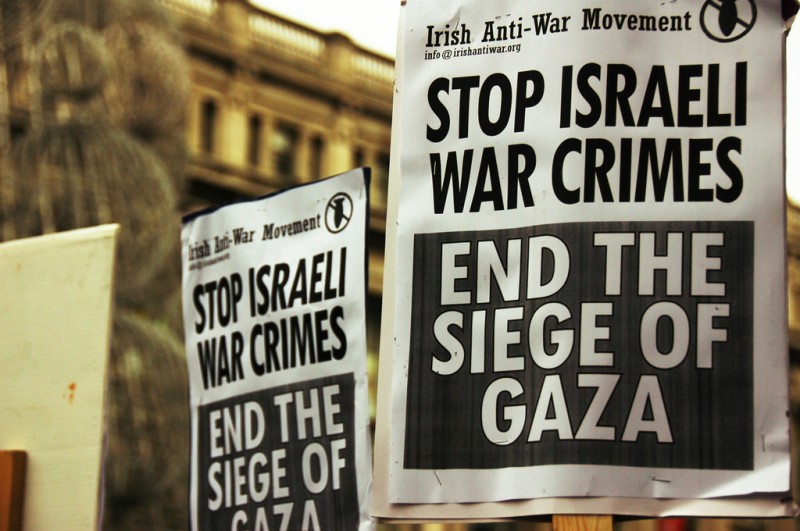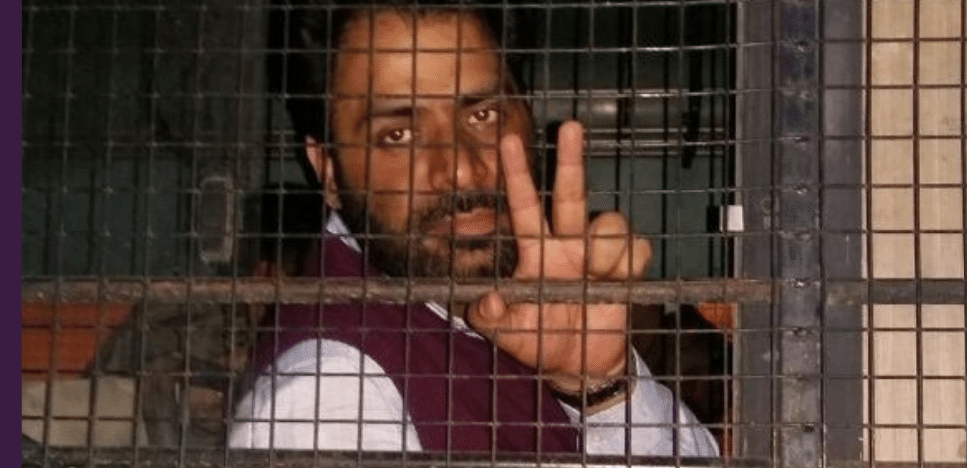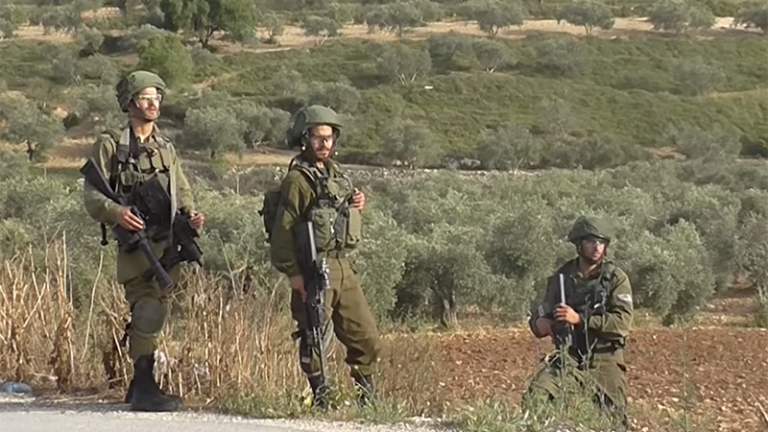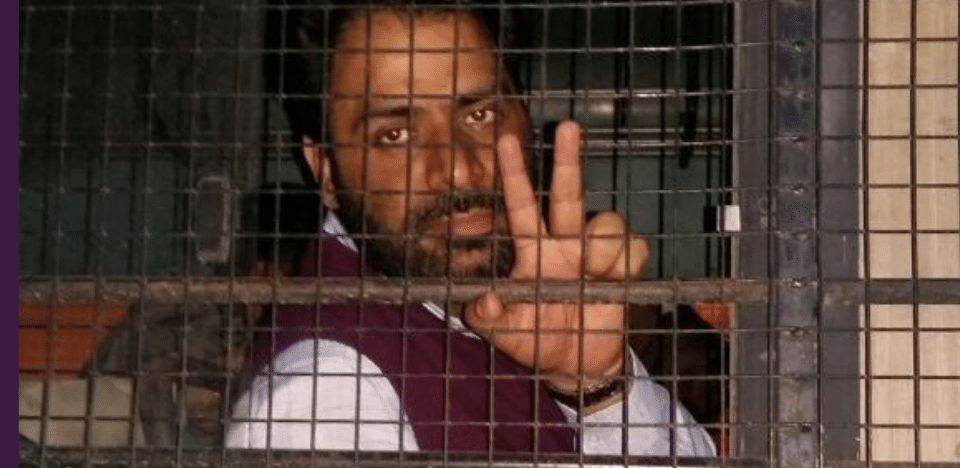
Walking into a minefield
September 14, 2022
Statement by Jonathan Kuttab regarding Khurram Parvez
November 22, 2022First published in Arab Center Washington DC – September 14, 2022
The current situation in the occupied West Bank reflects an ever-growing Israeli effort to take over large parts of Area C and to remove as much of its Palestinian population as possible. The Israeli military accomplishes this aim using a variety of measures, with both existing and new regulations providing legal cover for its actions. In addition, there has recently been a marked increase in settler violence in Area C, as well as increased attempts to confiscate land and drive Palestinian inhabitants towards Areas A and B. Two relatively new methods have been increasingly used in this campaign to ethnically cleanse Area C: the designation of areas where Palestinians live as exclusive military zones, and the establishment of farming outposts that deploy tactics amounting to a de facto seizure of Palestinian land.
The current situation in the occupied West Bank reflects an ever-growing Israeli effort to take over large parts of Area C and to remove as much of its Palestinian population as possible
The Battle for Area C
The Oslo Accords, which were signed by Israel and the Palestine Liberation Organization in the 1990s, divided the West Bank into three areas. Area A is the most densely populated of the three, and constitutes 18 percent of the West Bank. It is mostly governed by the Palestinian Authority (PA), although Israel retains full external security control over the area. Area B, which comprises roughly 21 percent of the West Bank and consists mostly of village centers is under full Israeli security control, but the PA runs its civilian affairs, including health, education, and the economy. Area C, which makes up about 60 percent of the West Bank and is home to the majority of the territory’s natural resources and agricultural land, remains under exclusive Israeli control. Area C today is packed with multiple Israeli army bases, 230 illegal Israeli settlements with around 400,000 settlers whose activities are largely governed and condoned by Israel, and 300,000 Palestinians residing in 532 residential areas directly administered by the Israeli Coordinator of Government Activities in the Territories (COGAT)—a unit in the Israeli Ministry of Defense.
Under the Oslo Accords, it was thought that land in the West Bank would gradually be transferred from Area C to Area B, and then finally to Area A, thereby increasing the land and population directly under the control of the Palestinian Authority. This assumed outcome, along with three Israeli military redeployments that moved troops out of several Palestinian areas in 1994, 1995, and 1997, led many to believe that areas under the control of the PA would form the nucleus of a burgeoning Palestinian state once the status of Israeli settlements and the details of security arrangements were hashed out in a final agreement. But with the 1995 assassination of then Israeli Prime Minister Yitzhak Rabin, the process ground to a complete halt, and Area C remained under the full authority of the Israeli Civil Administration, which is subordinate to COGAT.
Every effort has been made to limit, or to outright eliminate Palestinian presence in Area C, and to gradually annex it into Israel
Many Israelis, and particularly Israeli settlers, consider that Area C “belongs” to them, and they therefore see no reason to transfer any more of it to the PA. And in fact, every effort has been made to limit, or to outright eliminate Palestinian presence in Area C, and to gradually annex it into Israel. In fact, some politicians have openly called for the official annexation all Area C lands, with various plans regarding what to do with the 300,000 Palestinians who still live there. However, this effort has been shelved for the time being, following international pressure.
But despite the fact that wholesale annexation has been put on the back burner, Israel’s effort to create and control a West Bank free of Palestinians continues apace, with the Civil Administration working to freeze all Palestinian growth and development in Area C. While Palestinians continue to live in many parts of Area C and to practice agriculture there, Israel’s military government in the West Bank has specifically prohibited them from planting trees (particularly in the Jordan Valley), and has restricted any and all Palestinian construction and development activities. Palestinian applications for building permits are almost never granted, and there has been no urban or regional planning, except when it comes to Israeli settlements and their “regional councils,” whose area of control has steadily expanded.
Military Designations
One way that Israel works to clear Palestinians off of their land in Area C is to declare swathes of the West Bank as Israeli military zones, thus precluding Palestinian presence in these areas. One recent example of this practice is found in the area of Masafer Yatta, a large area in the South Hebron Hills in the southern West Bank where roughly 1,150 Palestinians live in a dozen small villages. In the 1980s, the Israeli Army declared the entire area a military training and firing zone. The villagers filed suit over the matter in the Israeli courts in the year 2000, but their argument that their claim on the land predated that of the Israeli Army was ultimately rejected by the Israeli High Court of Justice on May 4, after a two-decades long legal battle. That decision paved the way for the Israeli Army to remove the Palestinian population from the area. Palestinians see this as a blatant act of ethnic cleansing, and have vehemently protested these actions. Meanwhile, the Israeli Army has moved aggressively to make the area unlivable by confiscating solar panels that were donated by the European Union, seizing water trucks and other vehicles, destroying structures, and prohibiting teachers and school children from going to school. In short, the Israeli Army is determined to make Masafer Yatta unlivable.
One way that Israel works to clear Palestinians off of their land in Area C is to declare swathes of the West Bank as Israeli military zones, thus precluding Palestinian presence in these areas. From a legal point of view, designating the area for military training entirely avoids the question of ownership
From a legal point of view, designating the area for military training entirely avoids the question of ownership. Military training is viewed as a security matter, and Israel’s High Court has made it clear that it will not interfere in the judgement of COGAT officials when it comes to military matters. In the view of the Israeli courts, the fact that Israeli settlers are present in the area and will almost certainly set up new settlements there is not relevant. And following the recent court ruling, the only remaining obstacle to Israeli settlement in the area is the physical presence of Palestinians. In order to force them to leave, the army is actively conducting live-fire exercises close to their homes. Not only does this development endanger these residents’ lives, it is also designed to slowly drive them from the area. This method, whereby Israel declares a given area a closed military zone on the grounds that it is necessary for security or training purposes, has already been frequently used to depopulate most of the Jordan Valley. And Israeli courts have repeatedly indicated that even private Palestinian land can be confiscated when there is a military or security justification. The precedent for this position came in a 1979 case regarding a proposed Israeli settlement called Elon Moreh that was to be founded on private Palestinian land, a case in which the Israeli High Court ruled that the settlers needed to be removed, but also stated that even the act of building Israeli civilian settlements on private Palestinian land is permissible if they serve a military or security purpose. Despite the fact that the court’s ruling staved off this one instance of land theft, it also provided the security justification for future appropriations of Palestinian land for the purpose of building Israeli settlements.
Israeli courts have repeatedly indicated that even private Palestinian land can be confiscated when there is a military or security justification
Farming Outposts
In the last five years or so, Israeli settlers have also started using a new technique to acquire more land in Area C: setting up farming outposts with extensive livestock operations. These outposts’ livestock graze across huge areas of land that does not belong to the settlers, and they chase out any Palestinian farmers or shepherds by force. The Amana settler organization, for example, has been a driving force behind the establishment of over 50 such farming outposts, which control some 240,000 dunams using this method, or about seven percent of the total land of Area C. The Israeli Army is fully aware of settlers’ use of this tactic, and as a rule does not interfere unless Palestinian farmers put up resistance, in which case the army moves in with force to protect the Israeli settlers and their livestock. Without exception, all of these farming outposts are illegal under both international and Israeli law, and their structures all lack construction permits. Occasionally, the Israeli Civil Administration will issue demolition orders for these illegal structures. However, it typically refrains from actually enforcing the demolition orders that it issues against Israeli settlers’ farming outposts, even though it rigorously monitors and demolishes any new Palestinian construction activity, including the installation of solar panels to provide electricity. And although the Civil Administration is nominally independent from Israeli settler activities and goals, its offices are typically located inside of Israeli settlements, where its employees often live. This, together with the fact that Israeli settler organizations actively report Palestinian construction activities that they deem “illegal” to the Civil Administration, makes clear that the settlers are firmly in control.
Without exception, all of these farming outposts are illegal under both international and Israeli law, and their structures all lack construction permits
While in theory the lands that these farming outposts use for grazing is designated as “state land,” in reality Palestinians often own this land, and use it for agriculture and animal husbandry—at least until they are forced out by settlers and their livestock. When Israeli settlers establish these farming outposts, they do not bother getting permission from the Civil Administration; nor do they investigate the actual ownership of the land. These outposts are therefore illegal, even under Israeli rules and regulations.
The new regulations to retroactively legalize these settler farming outposts grant these outposts a semblance of legitimacy, allowing them to continue their displacement of Palestinians uninterrupted
Recently, however, the Civil Administration announced that it is promulgating new regulations to govern and retroactively legalize these settler farming outposts. Work on these new regulations started in 2020 when the Civil Administration stopped a previously planned evacuation of an illegal farming outpost called Mitzpe Yehuda. These regulations became something of a necessity for Israeli officials since there are now dozens of such outposts, all of which have been operating without official approval. The new regulations therefore grant these outposts a semblance of legitimacy, allowing them to continue their displacement of Palestinians uninterrupted. And although the regulations, which directly cover the use of land for grazing, in theory apply to both Palestinians and Israeli settlers, the actual application of the law is almost guaranteed to be biased against Palestinians, especially given Israel’s ongoing practice of apartheid against them. In the future, Israeli settlers’ farms will be legalized, while Palestinians’ livestock will be further restricted from grazing—even on their own privately held land—for lack of permits required under the new regulations, permits that are certain to be denied to them by the Israeli military administration that controls the occupied West Bank.
A Single Apartheid State
Israel’s process of achieving hegemony over Palestine remains the same regardless of where it takes place: working to control the land, one dunam and one displaced Palestinian at a time.
Israel’s continued designation of Palestinian lands in the West Bank as exclusive military zones and its recent regulatory measures supporting illegal farming outposts together confirm that the idea of a two-state solution has disappeared entirely from the Israeli calculus. Given Israel’s utter refusal to consider the transfer of land to the PA that was outlined in the Oslo Accords, and its ongoing efforts to find new ways to force Palestinians off of their land and to confiscate it for the use of both the military and Israeli settler groups, it seems that the future will only bring a single state—de facto or de jure—with Israeli sovereignty over the entirety of historic Palestine, and with an apartheid regime continuing to govern the lives of Palestinians. Within that regime, more laws and regulations will be enacted to achieve Israeli control over more and more land, with Palestinians increasingly confined within ever-shrinking areas of dense population, as they already are in the Gaza Strip and Area A of the West Bank. Meanwhile, Israeli settlers, who already enjoy the full rights of Israeli citizenship wherever they reside, will gain more and more control over the few “disputed areas” that are left in the West Bank. Although there are multiple areas in which Palestinians today are fighting to remain on their land, Israel’s process of achieving hegemony over Palestine remains the same regardless of where it takes place: working to control the land, one dunam and one displaced Palestinian at a time.






